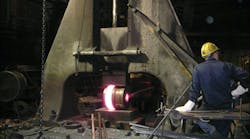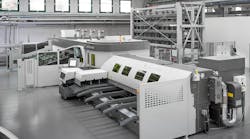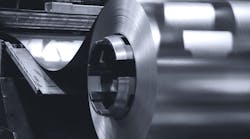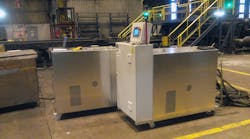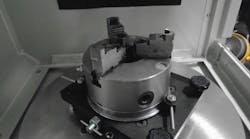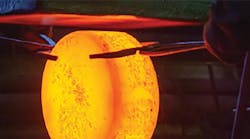A: RMS (root mean square) is a comparative number as related to surface finishes measured with a profilometer. A fine finish is in the range of 20-40 RMS, a machined finish often is in the range of 80-120RMS, and gritblasted surfaces will be in the range of 400-500 RMS. I compare it to measuring the up and down movement of a diamond stylus as it would slide across the grooves of an old 45 rpm record.
Skid-type surface roughness testers are common shop-floor instruments. A diamond stylus is traversed across the specimen and a piezoelectric pickup records all vertical movement. Peaks and valleys are recorded and converted into a known value of a given parameter.
Parameters differ in how they approach looking at peaks and valleys. The most popular parameter is “Ra”. Ra is commonly defined as the arithmetic average roughness. While the Ra parameter is easy and efficient, there are other parameters that can be more specific and useful depending on the application requirements. It is the parameters that enable us to define surface roughness.
Today, for the purpose of checking Ra values, the use of portable, handheld, surface roughness testers are not only economical, but are digital and easy to use. These surface roughness testers are a necessity for any shop floor that receives work with Ra requirements. Then, such values are reported either as Ra values or RMS values. RMS is defined as the root mean square of the Ra values — a calculated value of the average of the average values.
For more than 40 years H. James Henning held key technical positions in the forging industry, including as director of technology for the Forging Industry Association, and as president of Henning Education Services, a Columbus, OH, firm specializing in customized education and training in forging technologies.
Guidelines and recommendations offered in this column are based on information believed to be reliable and are supplied in good faith but without guarantee. Operational conditions that exist in individual plants and facilities vary widely. Users of this information should adapt it, and always exercise independent discretion in establishing plant or facility operating practice.
